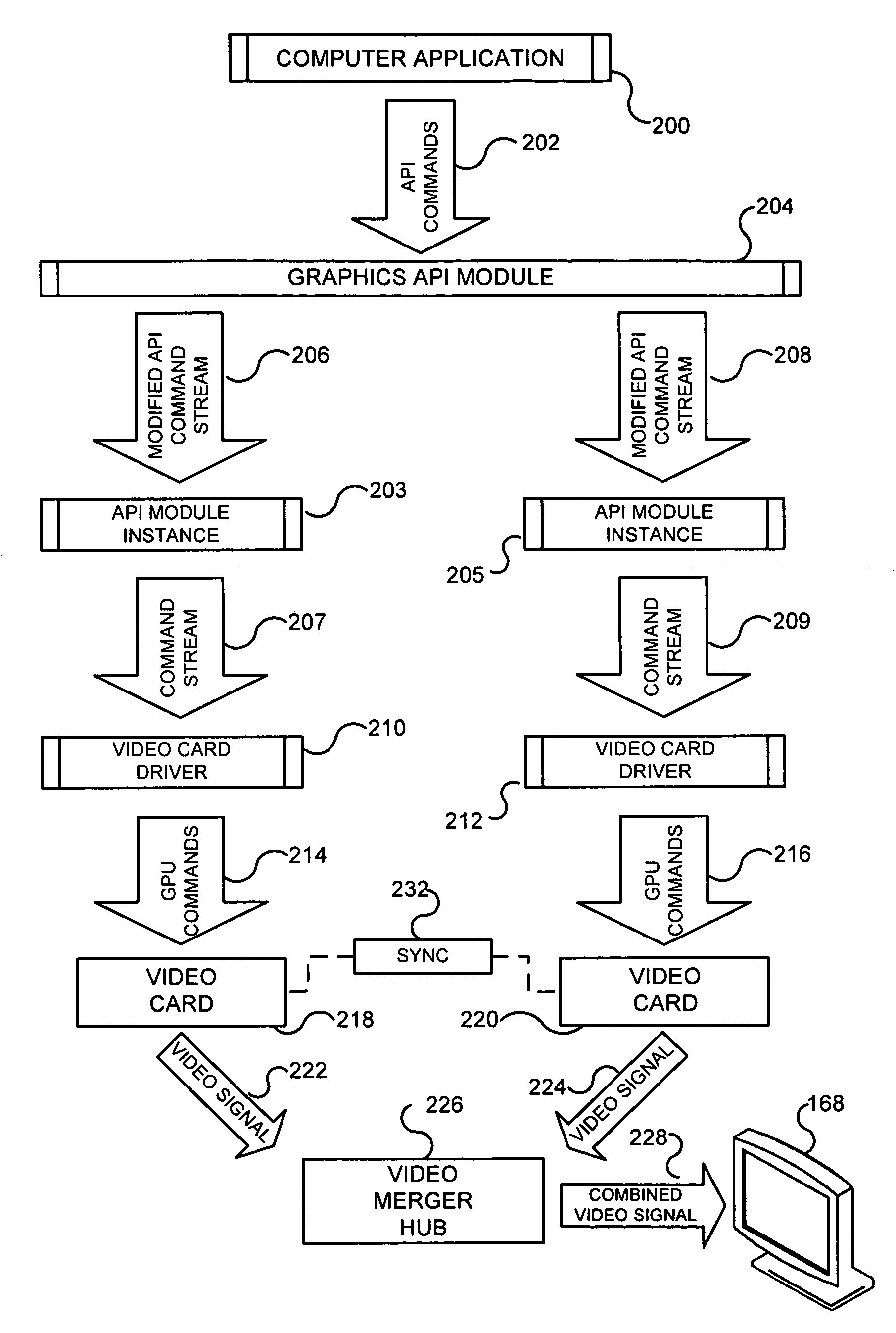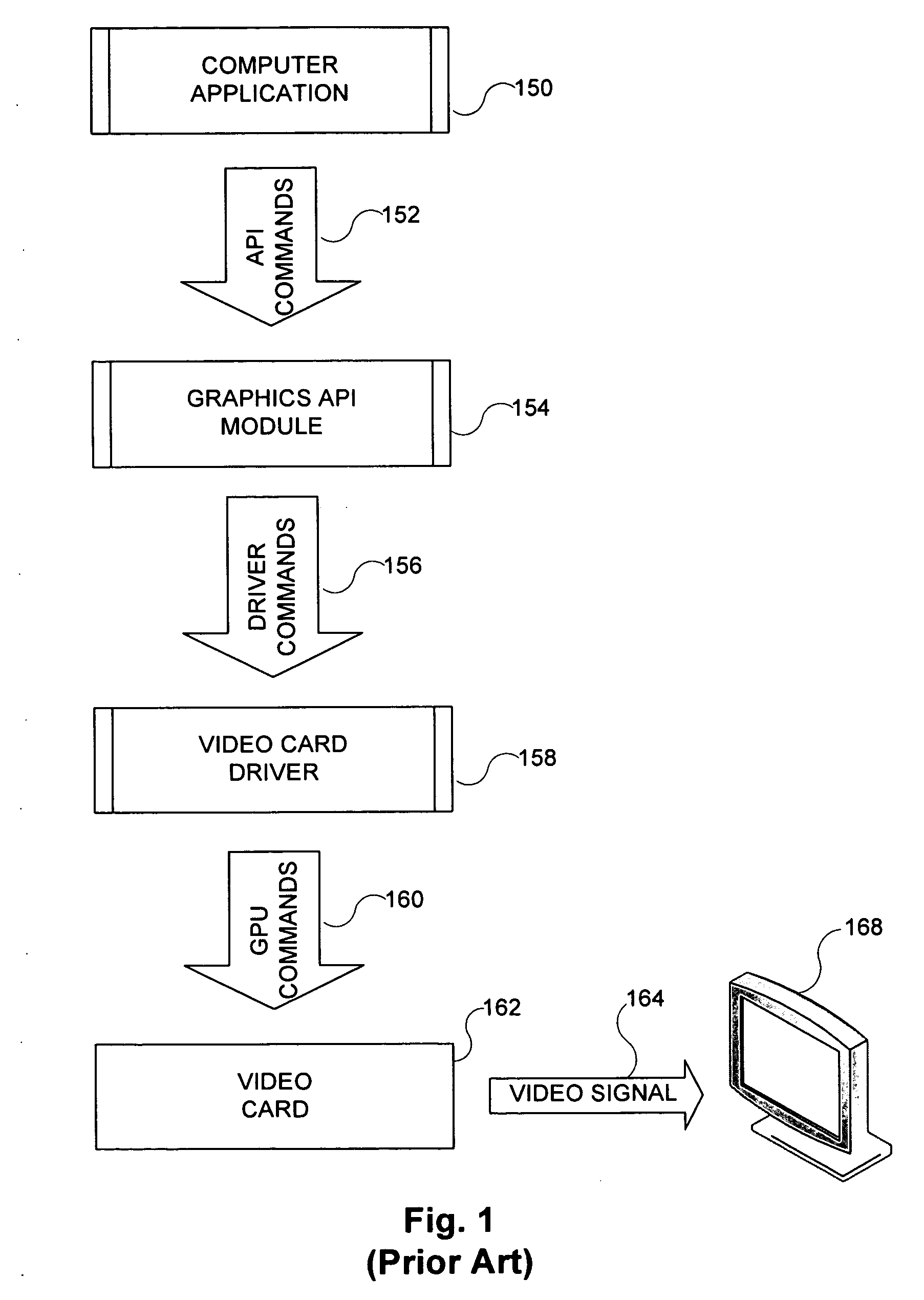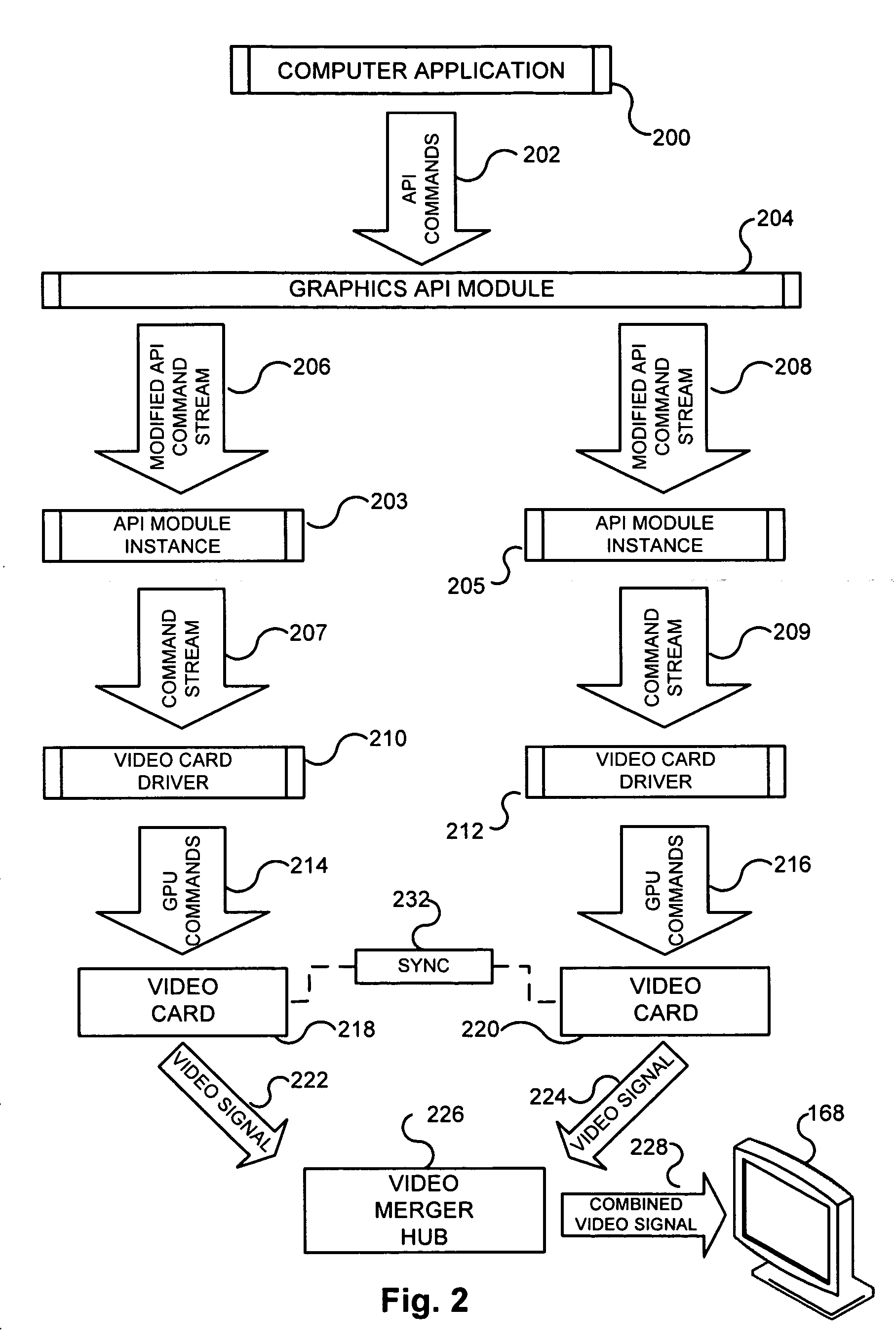Multiple parallel processor computer graphics system
a computer graphics and multi-parameter technology, applied in the direction of digital computers, processor architectures/configurations, instruments, etc., can solve the problems of reducing affecting the performance of the system, and preventing the cpu from performing other duties, so as to accelerate video graphics output and minimize delays
- Summary
- Abstract
- Description
- Claims
- Application Information
AI Technical Summary
Benefits of technology
Problems solved by technology
Method used
Image
Examples
Embodiment Construction
[0029]While the present invention will be described more fully hereinafter with reference to the accompanying drawings, in which a preferred embodiment of the present invention is shown, it is to be understood at the outset of the description which follows that persons of skill in the appropriate arts may modify the invention herein described while still achieving the favorable results of this invention. Accordingly, the description which follows is to be understood as being a broad, teaching disclosure directed to persons of skill in the appropriate arts, and not as limiting upon the present invention.
[0030]FIG. 1 is a block diagram illustrating a modern-day graphics subsystem within a computer typically configured without the present invention, and its interaction with typical personal computer software to generate an image.
[0031]Under typical circumstances, a computer application 150, such as a game, 3D graphics application or other program, will generate API commands 152 for the...
PUM
 Login to View More
Login to View More Abstract
Description
Claims
Application Information
 Login to View More
Login to View More - R&D
- Intellectual Property
- Life Sciences
- Materials
- Tech Scout
- Unparalleled Data Quality
- Higher Quality Content
- 60% Fewer Hallucinations
Browse by: Latest US Patents, China's latest patents, Technical Efficacy Thesaurus, Application Domain, Technology Topic, Popular Technical Reports.
© 2025 PatSnap. All rights reserved.Legal|Privacy policy|Modern Slavery Act Transparency Statement|Sitemap|About US| Contact US: help@patsnap.com



